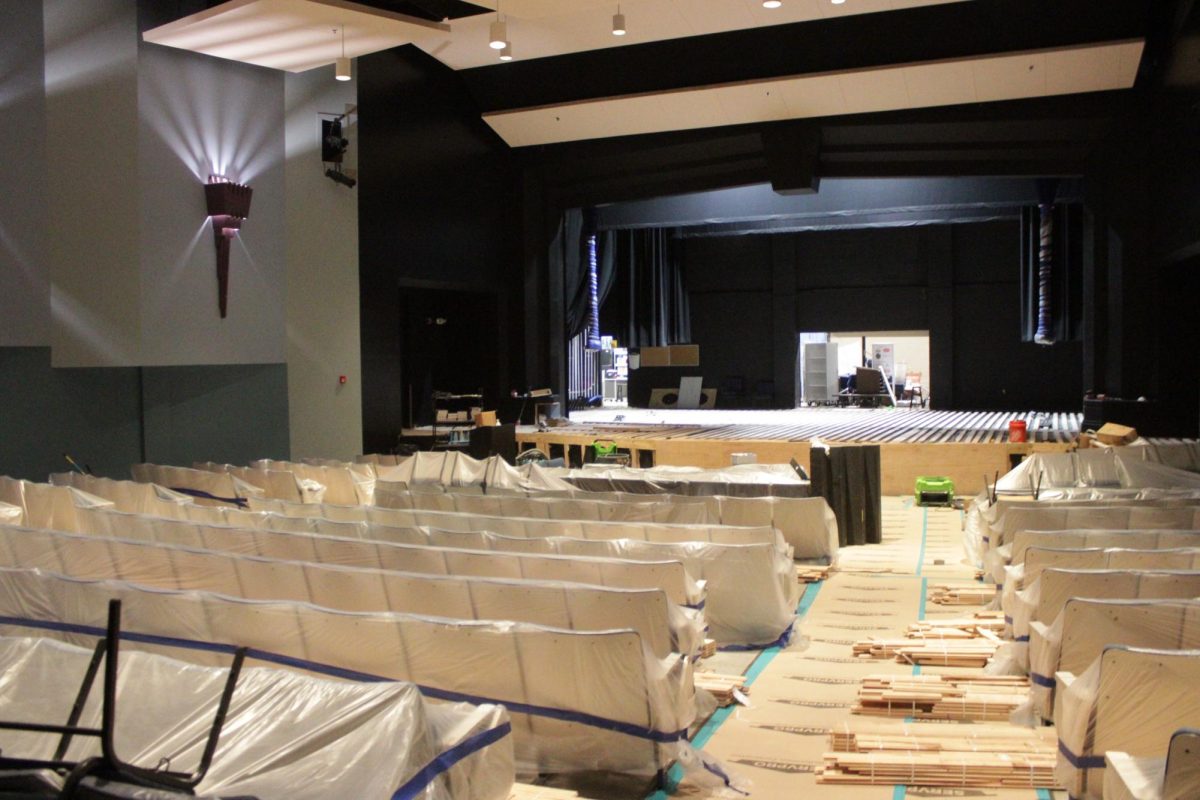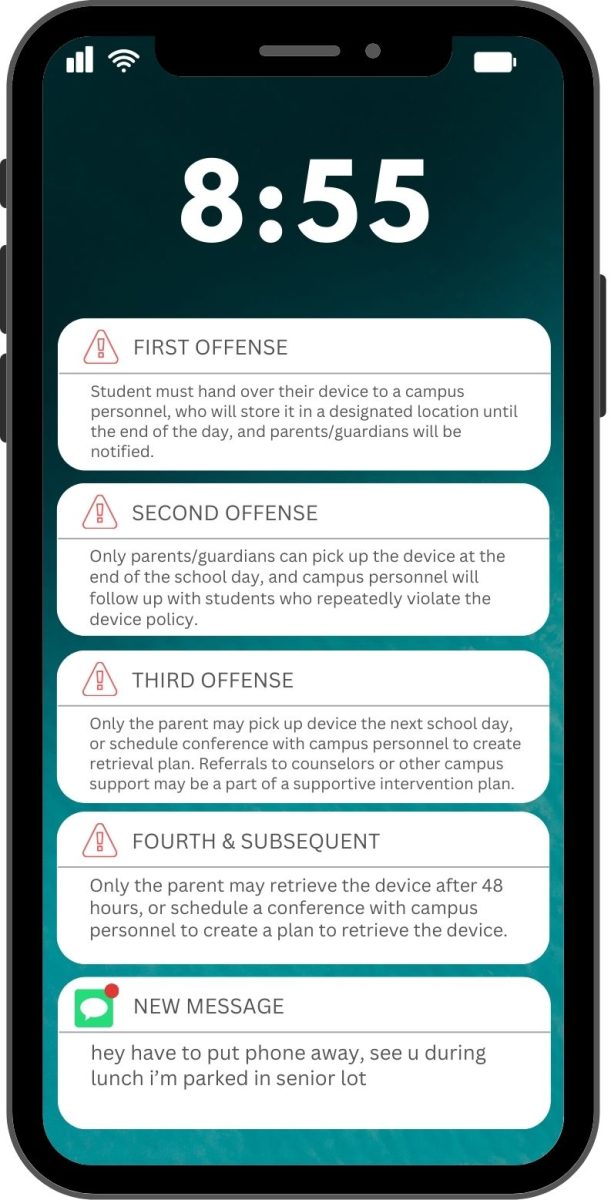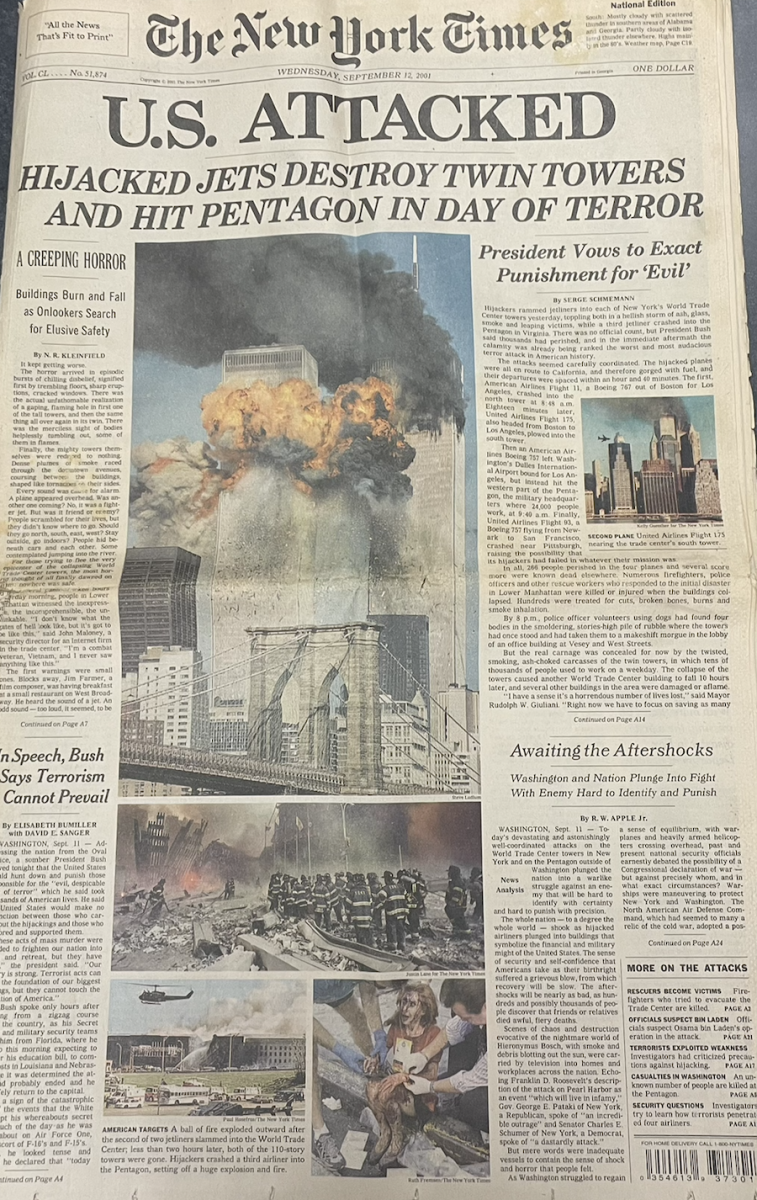
Arts organizations in Austin among those affected by Trump’s new budget plan
As a fine arts magnet school, McCallum has a unique perspective when it comes to the importance of the arts, which are being called into question in President Trump’s “America First” budget proposal for 2018.
President Trump is facing backlash for his plan, which calls to completely eliminate the NEA (National Endowment for the Arts) among other organizations supporting the humanities. The NEA is a significant source of arts funding in the country; it’s the only source,public or private, that serves all 50 states, Washington D.C., and every U.S territory.
President Lyndon B. Johnson established both the NEA and the NEH (National Endowment for the Humanities) fifty years ago. Until now, no president has attempted to dismantle the organizations.
“Art is a nation’s most precious heritage,” Johnson once said in defense of the legislation. “For it is in our works of art that we reveal to ourselves, and to others, the inner vision which guides us as a nation. And where there is no vision, the people perish.”
The arts greatly contribute to both Texas and America as a whole. According to the Texas Culture Trust, the arts industry brings in $5.5 billion to the state annually. Meanwhile, on a national level, it constitutes 4.2% of our GDP (Gross Domestic Product), around $742 billion. Carlotta Stankiewicz, Director of Marketing & Communications at the Blanton, said that she believes that arts not only contribute to the economy, they also positively enhance society. (The Blanton does not currently receive NEA funding, but as a major arts institution in Austin they are familiar with the agency and those who receive aid from it).
“I believe the arts inspire us to wonder and explore and think, ‘What if?’” Stankiewicz said. “Through art and music and theater and the like, we’re encouraged and even forced to open our minds to different perspectives. In the Blanton, you can experience life through the eyes of Renaissance-era European royalty, a 19th-century native American, or a post-WWII Latin American farmer, all in the span of a half hour. As our world grows ever more interconnected, it’s important to develop an understanding of people and ideas and experiences that may differ dramatically from ours, and art can help do that.”
Though Trump affirmed that he was concerned that NEA funding was unnecessary and a drain on the federal budget, in 2016 NEA funding from the federal government only made up about .004% of the budget, or around $147.9 million. From another financial perspective, in addition to providing much-needed support on its own, NEA activities also encourage giving in the private sector: for every dollar directly given to arts organizations, an additional non-federal source matches it by up to $9.
Trump’s proposed “America First Budget Plan” also plans to eliminate the Institute of Museum and Library Services and the Corporation for Public Broadcasting, affecting institutions like NPR and the Smithsonian museums. The Environmental Protection and the Agriculture Department, among others, also took deep hits in their funding, all for the sake of increasing defense spending, placing a down payment on the border wall and expanding school voucher programs.
Austin has received nearly $11 million in NEA grants since 2010. One such recipient, local organization Creative Action, which frequently partners with AISD, aims to foster social and emotional growth through arts enrichment programs. Corinna Archer Kinsman,
Associate Director of Development at Creative Action, strongly believes in the positive impact that arts organizations like hers have on a population.
We serve about 20,000 young people and adults every year in Austin,” Kinsman said. “Not only are we giving young people access to the arts that they wouldn’t have otherwise; we go into a lot of lower-income schools and make things affordable through fundraising… we [also] really help young people in terms of growing social and emotional skills, twenty-first century skills, confident communication, critical thinking, and being creative problem-solvers. We have really stellar program evaluations; more than 90% of students after participating in Creative Action say they’re more confident, they’re able to express themselves better, they know how to work with their peers better.”
A core tenet of NEA support is that it aims to provide access to the arts for those who usually are overlooked: 36% of grants go to organizations that reach disadvantaged populations like veterans or those with disabilities, and 33% of grants serve low-income audiences. Kinsman, whose programs serve disabled and lower-income populations, among others, expressed her conviction that NEA grants are critical to reaching these underserved groups.
“We really feel like everyone should have access to these opportunities, so we’re totally supportive of putting our tax dollars and government back to these opportunities for all,” Kinsman said. “We know that sometimes when we just rely on private sources that means some people get left out. So the great thing about the NEA is that it helps organizations like us provide access to all of these programs for schools that can’t pay for it, or families that can’t pay to send their kids to summer camp, or all these amazing teen programs that pay them [to create art] For us, it’s really a significant funding source. Junior Andrea Barrera-Castro, who has been working with Creative Action since she was in kindergarten and is now a member of its Changing Lives Youth Theatre Ensemble, which partners with local women’s shelter Safe Place, also strongly believes that work like that of Creative Action has an undeniably positive effect on those who participate.
“Creative Action makes an effort to make art into social justice- we’ve used several pertinent societal issues (on a local to even on a more global scale) such as gentrification, institutionalized racism, etc.” Barrera-Castro said. “Along with that, we also work on nurturing the growing part of a student’s mind. Creative Action and organizations like it are the backbone of raising a new generation of informed activists and artists who know how to take action in a difficult -to say the least- political climate.”
AISD would also be affected by the proposed cuts; it’s one of 24 recipients of NEA funding in Austin this year alone for its role in the Creative Learning Initiative, which aims to provide quality arts education for every student in AISD and professional support for teachers through art-based instruction strategies.
“The Creative Learning Initiative started 6 years ago when a group of individuals representing larger organizations came together around a question: Considering the overwhelming positive research of the impact of the arts on students success, what is the state of the arts and arts-education in Austin?” John Green-Otero, the Creative Learning Initiative Coordinator, said. “From this question we learned that there was a serious issue of equity of access to quality arts and arts-rich education in our city, so the Creative Learning Initiative was born.”
The CLI has three goals in providing for AISD schools: training teachers in creative education strategies, providing resources for arts education for all students, and addressing gaps in the system, like adding fine arts positions and introducing theatre and dance classes at the elementary level.
McCallum’s was one of the first two vertical teams that the CLI began work with in 2013. They now serve five teams, or 58 campuses, and their goal is to reach every vertical team by 2022, providing higher-quality arts education to 86,000 students.
The CLI has seen a high level of success in its efforts; In addition to increased attendance, 92% of teachers reported increased student engagement in learning and 85% reported a positive impact on student behavior. Green-Otero asserts that the program’s rapid success would have been much more difficult to achieve without assistance from the NEA.
“The NEA grant funds the coach for the sustaining [involved for more than three years] campuses, the resources we give them, and the professional development,” Green-Otero said. “It [the funding] is critical because it supports many programs like ours and provide not only the resources but the experience and collaboration to overcome issues that inevitably arise when engaging in such a complex and large venture. I don’t think we would have made the progress we have without them.”
Above all, each member of the Austin art community stressed the critical role of the government in providing support for the arts community, noting both the economic and cultural importance.
“The arts are an expression of the human experience and so vital to it,” Stankiewicz said. “A government that cares about the welfare of its people supports programs that enrich our minds and lives and society – and the arts do just that.”







